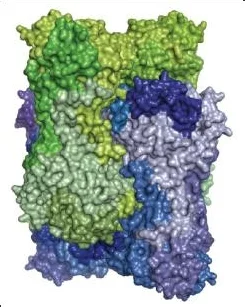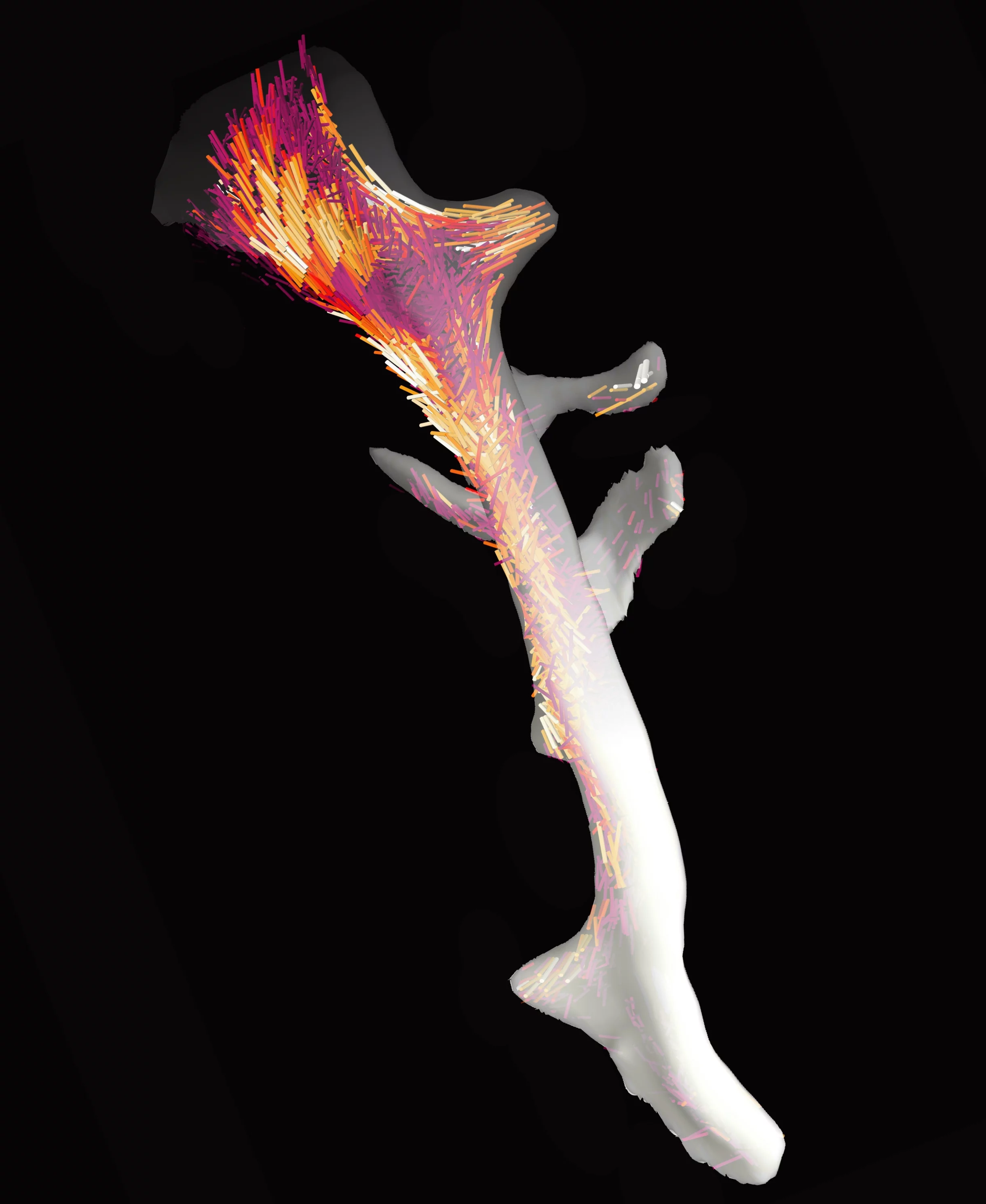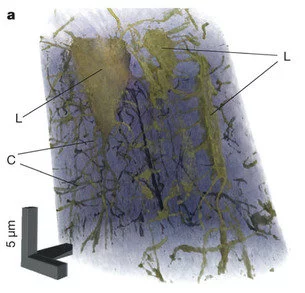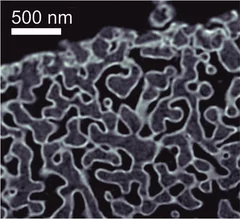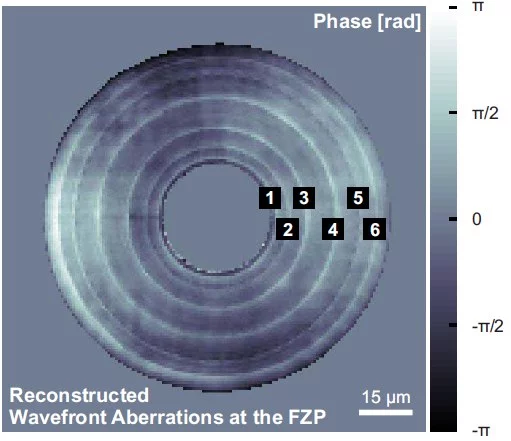The small angle diffraction of hard x-rays provides statistical information on nanoscale ordering and structure. We develop experimental methods for time resolved measurement of structural changes induced by laser radiation, microfluidic mixing or temperature changes. Image on the left shows interlocked octameric rings of CS2 hydrolase (abstract in journal webpage).
By scanning the sample relative to the x-ray beam we obtain spatially resolved SAXS datasets. For each point in the images a statistical description of ordering in the nanoscale is available. This technique can be further combined with sample rotations to probe ordering in 3D or to obtain measurements that are resolved in three-dimensions via tensor computed tomography (CT). In the image on left we show the result on a trabecular bone fragment of roughly two and a half millimetre long. The image shows a spatially resolved representation of the arrangement, orientation, and degree of orientation of nanoscale collagen fibrils (abstract in journal webpage).
